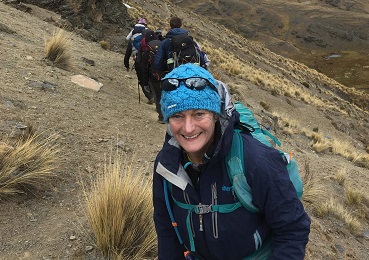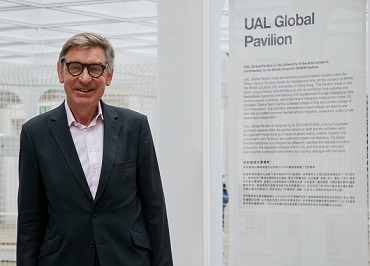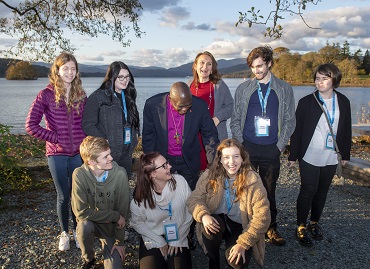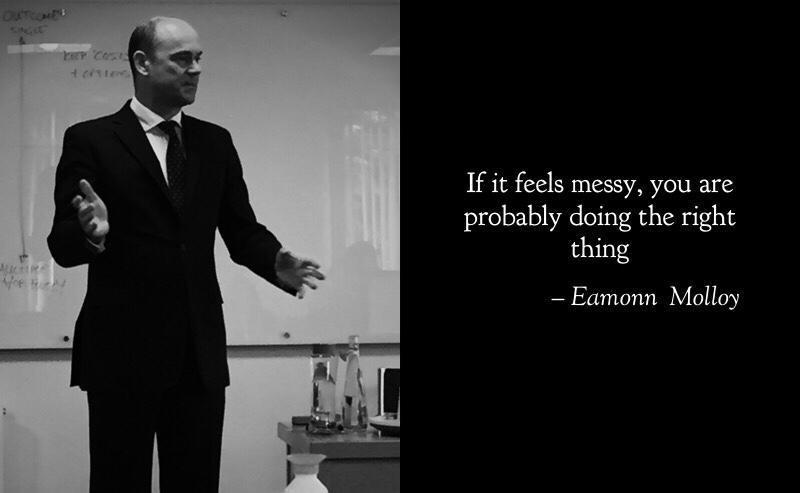Cress Allwood, round-the-world solo cyclist, expedition leader and life-coach (2020)
“On a deserted, remote & dusty dirt track in a disused mining area in NE Chile, 9 months into a solo Round the World bike ride, I am alone, scared and struggling to focus. I have no detail on my map, no GPS and no handy signposts. I need to quell this draining anxiety.
Sitting down, I leaf through coaching cards, reading reflective questions until one triggers a response; forcing me to consider my purpose. What is this adventure all about? Re-tracing my route held no appeal - I sought challenges, not easy options. I needed to re-focus; allowing only positive self -talk whilst trusting my compass bearing and the sun. I set off uphill with absolute concentration. My efforts were later rewarded: I reached tarmac, beaming!
What I learned? Never underestimate the power of purpose: this can be a life saver.”

At the times we need to make the hardest decisions with the biggest consequences checking in with the very big picture stuff, the ‘why are we here’ stuff of organisational existence, can be pivotal. And potentially the one of very few ‘knowns’ we have.
It’s also a pretty handy toolkit for making the smaller, everyday choices that cumulatively can send us on committing trajectories
In the previous blog I suggested using the big W’s of strategic foundations, (the why, the how, the who we are) for guiding leadership decisions in times of crisis and in the regular, every-day running of our institutions. In this blog we hear from UK higher education leaders and look at global examples to further unpack and explore the use of strategy in decision-making.
Strategy is …
Up until a couple of decades ago ‘strategy’ wasn’t even a thing in the world of higher education leadership. With the increasing complexity of financing, of the policy environment and the rise of the Senior Leadership Team strategy all things ‘strategic’ gained prominence in the language, if not the leadership, of universities.
Mission, vision, values all became at least a web page and usually generated a strategic plan. Some of the ‘W’s were gifted by founders, some were actually born by our people. Some are even lived and used meaningfully. For other universities strategy is dusty corporatese, unrelated to the daily doings of university life.
Do these foundations matter at all? Does it matter if and how we bring these to life? Are they useful? Yes - in theory. Yes because they capture and anchor the very essence of our uniqueness, direction, fortune and culture. But in reality, do they matter? In good times it’s hard to say - why even bother asking? We just do what we’re doing and the money, reputation, relationships roll along. In hard times previous choices and actions reveal their full impacts. For leadership, hard choices and hard questions are unavoidable.
In this blog we ask what the pandemic reveals about the strategic choices we have made and actions taken. Are we being true to or straying from our founding principles? And what is the impact? What is this doing to our viability, reputation and survival in these straightened times? The proposition is that being true to your strategic principles, seeking guidance in these makes for more effective decision-making and leadership.
After the shock
I’m writing this on April 25th 2020, five years to the day since the earthquake literally collapsed the ground beneath my feet in Kathmandu, Nepal. That quake and the second on May 12th cracked the country, tearing apart the socio-economic fabric, revealing and exponentially exacerbating the rich-poor divide. Tens of thousands died. In the weeks and months immediately after many of us were invigorated, clear-minded and purposeful in our utter determination to get aid and relief out to the needy. We acted with certainty. None of us had done this before but we had clarity on what was needed, what the goal was.
It was the year that followed that the biggest cracks appeared – in groups and communities. When people previously united by a clear cause argued and split on what next, why and how; when the continuous and unpredictable after-shocks, the drudgery of daily living in the reduced world, the relentless fight for basics; when the mental cracks, the emotional overwhelm took hold. We had no purpose, every direction questionable: the world was too complex, murky with uncertainty and distrust to act. It was a long haul before hope and any certainty were possible.
From crisis to continuity
This is the situation many people, many leaders may be finding themselves in now: the crisis momentum has passed, we are sliding in to diffracted disarray – and exhaustion. Perhaps you are too. And also recognising that this moment is really just the start – the long haul of ‘getting through’, recovery, re-invention is just beginning.
On the one hand you need to bring your people with you, to provide some sense of confidence to move into the next semester, the new academic year. Their emotional, financial and academic needs must be met and a ‘togetherness’ found.
And yet there are some difficult and potentially divisive decisions to be made. Decisions that may be perceived as ‘the university’ doing this ‘to us’ if the good-will extended by staff, stakeholders and students and the sense of in-it-together isn’t robust. Decisions that will be held up to intense scrutiny by these people and of course also regulators, policy, standards – banks and investors. Decisions whose degree of ‘right’ (or wrong) won’t be known for many months, if at all and which are made in the context of an operating environment which is utterly uncertain, unstable and unpredictable. Like Nepal post-earthquake the aftershocks, the fall-out will go on for some time yet.
How do we make decisions when so little is known or knowable and the wiggle room so tight?
I asked leaders to reflect on the interplay of their COVID-19 responses and their strategic principles to understand how these align. We use these to get a better understanding of what they‘ve gained and how this directs future choices.
It is an invitation to take a step back from the crisis, to sense check and sense make before setting off on the new trajectories that will form the new normal; to help navigate the seas of political, policy, financial and societal ambiguity and uncertainty we find our leadership (and followership) afloat in.
What can we learn from their candour to help us with next steps?
************************************************************************************************************************************************************************************

Nigel Carrington, Vice Chancellor University of the Arts, London
“The Covid-19 crisis poses really major challenges to the teaching of the creative arts because they rely so much on bringing people together as a community: we have always taken the view that some of the most exciting developments in creative thinking and making occur when people with different cultural backgrounds and experiences come together to share ideas. Traditionally, this has happened in face-to-face interaction, but many of the most exciting recent developments in creativity have occurred at the intersection of computing/digital innovation and the more traditional creative skills.
The need to move on-line has not simply challenged the ways in which we deliver learning and teaching, but also radically accelerated the broader ways in which we help our students to think and create. In the space of only a few weeks we are radically changing the ways in which we ask students to develop and realise their ideas and concepts. We are focusing in this time of crisis and lockdown on new ways to assess the quality and originality of their thought without the need to be physically present in the same place.”

Doing more of what makes us who we are, doing it faster and being pushed to apply these principles to do it differently are what shine through reading Nigel’s reflections. Specifically his narrative speaks to a confident course of transformational education with creativity at the heart of everything; reflecting the ‘challenge and opportunity’ the sectors they represent as lived experience; crossing-boundaries and asking original questions. Seeking to create ‘inspirational environments’ in the new distanced medium whilst managing social justice will certainly keep the challenge ongoing.
“The pandemic has emphasised the need to think and work differently. With the benefit of hindsight, it would have been wonderful if we had accelerated our moves into the virtual world earlier and therefore been better able to address the unforeseen physical lockdown of spaces.
"On the other hand, the crisis has emphasised to me the power of creative thought and the ability of creative academics and technical staff to use that creativity to address unforeseen major challenges.”
’Yes’ we are being true to who we are and why we are here – let’s be braver and bolder in our actions, and grow our confidence to be more like this. It takes courage to risk being world leading, to initiate, to innovate and influence. Perhaps the pandemic response has nudged UAL into stepping up and stepping into this more uncomfortable, more vulnerable space of leadership from the front?
A nod to imbalance: being true to the other principles that define who UAL, one challenge as they move into the ‘new normal’ may be around the centrality of sense of place as ‘who we are’, specifically immersion in and of London. How might they draw on creative ingenuity of students and staff to bring this key attribute to life in a distanced world?
Transformative education for a creative world
An extract from UAL strategy 2015-22: Focusing on transformative education, world-leading research and enterprise, communication and collaboration and building an inspirational environment.
UAL is built upon the specific histories, identities and achievements of its constituent Colleges, and their long tradition of engagement with creative, intellectual and professional life. UAL is one of the world’s most renowned institutions for education in arts, design, fashion and communication. Our critical mass and reputation allow us to influence the creative and cultural economy in the UK, Europe and beyond. Our staff and students are immersed in the cultural life of London, and connected into the city’s national and global networks. We are continually invigorated by these connections and contribute to their future development. We actively influence global cultural debates through the diversity and international reach of our staff, students and alumni.
Our values
- We uphold the values of social justice and environmental stewardship through our teaching and research, as well as in the way we live, work and conduct our operations.
- We ask original questions and arrive at new insights through the creativity and rigour of our practice and research.
- We draw on and develop the natural enterprise and curiosity of our students, encouraging them to be the next initiators and innovators in their respective fields.
- We respect our students’ and staff’s individual voices and collective endeavours, celebrating the breadth of backgrounds and cultures represented at UAL.
Our behaviours
- We equip graduates to face the future with confidence and responsibility.
- We place the challenges and opportunities of the creative and cultural sectors at the centre of our teaching, so that our students are well prepared for successful careers and can realise their full potential.
- We place creativity at the heart of positive social change.
- We celebrate the diversity of approaches across our subject areas. We actively seek to cross the boundaries between them and other areas of knowledge.
- We maintain productive relationships with our alumni for their benefit and for ours.

Prof Julie Mennell, Vice Chancellor of the University of Cumbria
Cumbria has had its struggles in the last few years since Julie came into post. She inherited a legacy of inaction, inefficient systems and structures and a significant financial challenge. Her style of seeking challenge and support from stakeholders and from regular, honest and open conversations with staff and students was a significant shift from previous leadership. Some hard decision making, and equally tough action were also new ways of working for many staff. However it was made clear to all that these choices pivoted from the strategic foundations of what Cumbria is ‘for’ and, gradually, in small and big steps, the university-wide effort has started to pay off.
They achieved “a real turning point” in December 2019 with an upswing in both staff confidence and new investment (and more recently a THE ranking for impact). Cumbria’s strategy seemed to be well founded and embedded. Was it? The pandemic has further strained the university. What does the staff and VCE response illuminate about the strategic foundations and how well or otherwise these hold up? Are they actually guiding action?
Cumbria has been consistent in its focus on people, engaging them in both concern and a call –out for flexibility. Staff are being encouraged to ask for help, acknowledging that the closure of campuses has exacerbated inequalities (“Our new norm is not an easy norm for many.” with an emphasis on seeking and offering support (“It's ok not to feel ok”) and directly addressing concerns over job security.
There is a frankness and candour to the communications at Cumbria, for example being explicit about the fiscal impacts of the virus and how they need to face these (“ensure we have the confidence of our bank, funders and customers.” “Recognise and accept that we may need to ‘share the pain and the ask’ of the next period to further our sustainability and success and to protect jobs and livelihoods across our university”). Whilst openness isn’t a stated principle, ‘saying it like it is’ is very much a ‘Cumbrian’ way reflecting the sense of place the university is steeped in. Another very local trait is a type of fierce pride in Cumbria and all things Cumbrian.
The discourse around the university, from staff, students and to some extent it’s constituent communities has pride woven throughout – it’s a driver, motivator to keep going and doing the hard stuff. Pride is mentioned in the vision statement, but perhaps this is a true university value that has revealed itself in the pandemic (”We are the University of Cumbria, we can do this.”)?
Related to pride, confidence, albeit a quiet, tempered confidence, is a key aspect of the Vice Chancellor’s messaging and is apparent too in the senior staff I spoke with. Whilst Julie is up-front about the immediate struggles she is equally direct about the university’s strengths and how they must play to these: our “portfolio focus and expertise (in providing higher-level skills to the NHS and wider health and social care sector, emergency services, education, rural and visitor economy, business and industry) and forecasts a surge in demand for key courses.
Maintaining strategic focus, being confident and seeking advantage (adaptability, leadership) are a key aspect of the university’s response “we need to be proactive in our response and not ‘wait and see’.”
Cumbria seems to be firmly seated in its strategic fundamentals in its response to the coronavirus situation retaining, strengthening and perhaps further embedding these principles in the daily business of being a university community. Less about accelerating, more about doing what is needed to maintain direction, holding fast as a community through the tough times, recognising and proactively building on strengths. Perhaps a honed practice of asking hard questions, and courage to go back to first principles (or possibly having no choice but to) is the hard-earned ‘win’, the legacy of leading through fairly continuous uncertainty, complexity and challenge?

Enriching people through place
Vision: To be recognised as a catalyst for individual and regional prosperity and pride, with national and international relevance, reach and impact.
The three pillars of University of Cumbria strategy 2017-20:
- People
- Place
- Partnerships
Values:
- confident – in our university, staff and students; inspiring, equipping and supporting our students and staff to succeed; celebrating and being proud of our individual and collective success;
- adaptable – adapting positively with integrity to our environment, emerging challenges and set-backs; open to new and different perspectives, beliefs, ideas and approaches;
- engaging – within and across our staff, student, stakeholders and wider communities; seeking out new approaches, ideas and perspectives to inform our thinking and practice;
- leaders – of place, people and practice; leading and professionally contributing to success; demonstrating individual and collective accountability;
- innovating – utilising our talent and expertise to deliver across boundaries focusing and developing our individual and collective talent to best effect; excellent at team working, working as one unified team to the benefit of our students and the communities we serve
************************************************************************************************************************************************************************************
From UAL and UoC we hear about a strengthening of core principles and an accelerated, adapting and adopting of these into new activities, services and products. This approach seems to be serving them well, at least for the moment. Time will tell on how they fare in the longer term.
Looking at the wider sector what has the pandemic revealed about other universities’ strategic action and how they relate to their guiding principles? Has mission drift created problems or not? Has deepening identity, staying on course helped?
The University of Tasmania has not been without controversy in some of its actions over the last decade. Established to serve the Tasman state, it had come under fire for the courting and enrolment of international students, specifically Chinese undergrads, and the relatively high percentage (30% according to THE).
UTAS was not alone in its approach. Seeking international fees as a fundament of the business model has been widespread across the Australian HE sector. It has oft been defended as the only viable response to government politics, policy and funding goals (the trilemma). However with a ‘for Tasmania, from Tasmania’ mission and a significant, very visible community footprint the ‘Chinese influence’ at UTAS had been a hot topic.
Since his arrival in early 2018, VC Rufus Black has initiated ‘rich discussions’ with UTAS people to discover what is important and shape the future. Getting back on mission has been challenged by multiple factors not least severe flooding on campus and intransigence and change resistance. Then came COVID-19.
Prof Black’s response was headline making: naming the ‘known risks’ and a massive speeding up of the 2019 strategy of simplifying the course offer and focusing in on the place-based strengths that make UTAS inimitable. In addition UTAS have developed a whole series of online ‘well-being’ in the time of COVID modules for their communities based on their strengths. Working hard from guiding principles.
Santa Clara University’s decision to loosen up on standardised tests for new students to reduce access inequity was based on their values of conscience and compassion towards a ‘more humane, just, and sustainable world’. It also involved going against the grain, standing up for who they are.
The cash flow and lost future earnings of many universities are all over the media now, and within this oblique and not so oblique criticisms of their business models, specifically the reliance on international student fees. Are these critiques also an accusation of being in it for the cash, of profiteering, of corporatisation, losing sight of what ‘is important’?
The sense of disdain and intimations of universities having fallen into the moral low ground would support this view. Maybe they are right. Maybe the money chasing was purely a survival tactic. Maybe not. Whatever the reasons, the financial reality it is reputation that is now on the line and a sense that much of higher education has lost its way. The fact that there is so much chatter, misplaced or not, reflects a view that universities are somehow ‘better than this’, that we expect them to behave in line with the espoused civic, societal and educational missions. We might have given up on big business to do the right thing, but we still hope our educators will stay true to their (founding) words.
Doing leadership from first principles seems to hang around pragmatic confidence, reflexive (in)action, collaborative wisdom...
‘First principles’ leadership – the ‘how to’ stuff
Values, mission statements and visions are all very fine but how do we go about turning them into decisions and action?
Look for the good stuff, do more and systemise support
In our Learning & Teaching missions many of us have been working in a glorious innovation muddle as we hurtled towards online. In many universities, innovation has been driven mostly by individuals and small teams. There have been few ‘rules’, maybe some loose systems and structures and probably reduced chains of command as leadership’s attention was pulled across the breadth of operations. In many universities teams were given the goal (deliver!) and asked to make it happen ‘however you can’. This is a fabulous tactic for rapid, effective at-scale response to ambiguity in short bursts.
To transition to a sustainable practice that reduces (or better prevents) staff burn-out, that meets quality assurance standards and also continues to improve and evolve services we need to find best practice, work out why it’s good and start to systemise the support for doing more of this and in more places. Aim to lift the burden of responsibility from the individual back to the institution. But without killing innovation.
Systemising involves keeping goals simple enough, clear enough and big enough to be compelling and also adding frameworks for all the necessary compliances around them. Keeping decision-making localised and resource access flexible should enable your staff to get to the goal using their expertise and ingenuity in a way that is appropriate for them. And do ensure the Purpose and Values are present and as real and helpful as they can be to support this decision-making too.
Add in support processes; checking processes; feed-back and feed-forward loops. Reward and recognise and enlist as much support and help as you can for the key players.
The above process is not just for L&T; it can help identify and build best practice in research, estate management, enterprise etc.
What can be done with a clear goal, a unifying imperative and, critically, sufficient freedom over the process to get to the goal in the best way they see fit. An example:
On building the 4000 bed NHS Nightingale from scratch, Boreham said: “We literally got a phone call, arrived here, met up with the NHS about nine days ago, sat around a table and basically did what you always do. We draw a plan up, over a brew, and then from that you start to build up a plan and create the product. It’s the biggest job I’ve ever done.”
And finally...
Make messiness explicit – there is no ‘right way’
We know the world is messy and so is innovation towards new and sustainable ways of working. Our purpose and values are there to provide guidance. They help set intention. However their specific interpretation in different situations will be down to that particular work team to decide on. It’s an inexact and messily human process. And that’s ok. If we don’t make explicit that it’s OK to fail (a little), we risk creating even further uncertainty and anxiety. Don’t allow people to feel they are supposed to know what they are doing, if in fact nobody knows. We are all working it out as we go.
Maybe ‘fail a little, fail honestly’ is a guiding principle too?

Find out more about the Leadership Summit 2020 - Leading with Humanity: Now and Next which ran online on 10 June 2020 due to Covid-19.
We are committed to supporting our members throughout this difficult and uncertain time. To explore the support resources we have put together over the past few weeks, visit our Covid-19 support page.